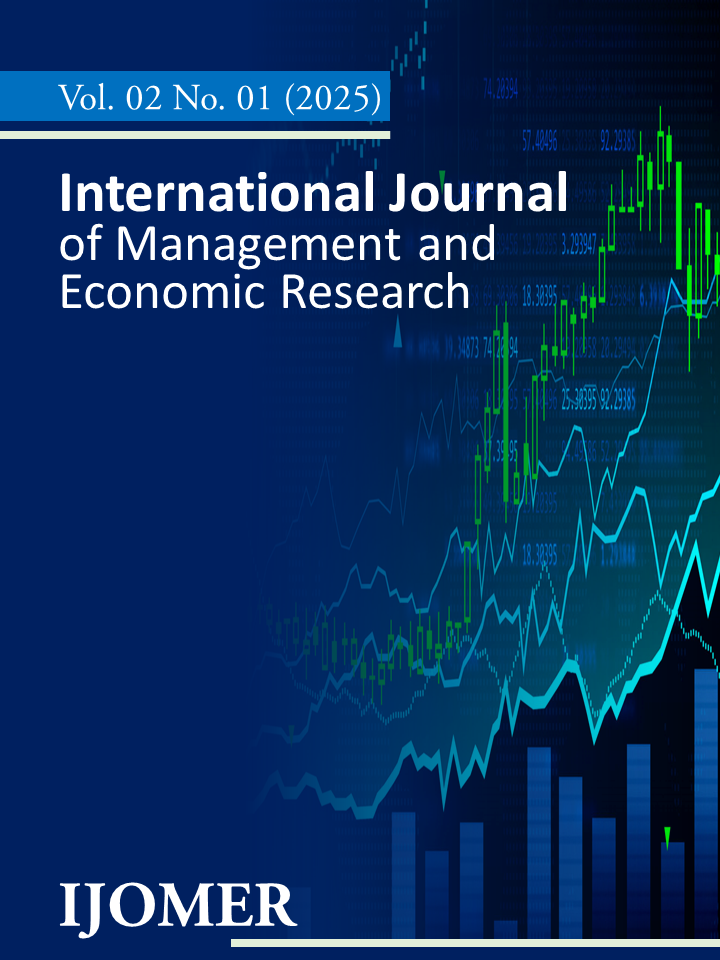The Impact of Logical Fallacies in Business Communication: Exploring their Impact on Decision Making and Interpersonal Relationships in the Professional World
DOI:
https://doi.org/10.70508/f0mrn117Keywords:
Logical fallacies, Business communication, Decision making, Interpersonal relationships, Critical thinking, OrganizationAbstract
Effective business communication is critical in improving organizational efficiency, speeding up decision-making, and reducing conflict. However, in practice, communication is often hampered by logical fallacies, which can undermine the quality of the message conveyed and interfere with rational decision-making. This research aims to analyze the impact of logical fallacies in business communication, focusing on their influence on organizational decision-making and interpersonal relationships in the professional world. This research uses a qualitative descriptive approach, analyzing the different types of logical fallacies that appear in business communication as well as their influence on organizational dynamics. The results show that fallacies such as ad hominem, false dilemma, slippery slope and overgeneralization often lead to irrational, limited or biased decisions which in turn are detrimental to the organization. In addition, the use of fallacies can worsen interpersonal relationships, triggering conflict, tension and distrust among individuals in a team, which hinders constructive cooperation. The conclusion of this study is that logical fallacies have a significant impact on both aspects, and to create more effective communication and rational decision-making, it is imperative for organizations to avoid the use of fallacies. Critical thinking training that focuses on the detection and avoidance of fallacies is an important step to improve the quality of communication and the effectiveness of decisions made in organizations.
Downloads
References
Abbas, N. F., Muslah, A. F., & Najem, A. S. (2024). Fallacy as a Strategy of Argumentation in Political Debates. Theory and Practice in Language Studies, 14(8), 2399–2407. https://doi.org/10.17507/tpls.1408.12
Adolph, R. (2016). Jingle Fallacy Influences on Systems Acquisition: Communications Breakdown? May 2018, 1–23.
Bannerman, P. L. (2008). Capturing business benefits from process improvement: Four fallacies and what to do about them. Proceedings - International Conference on Software Engineering, 1–8. https://doi.org/10.1145/1370837.1370839
Baron, J. (2004). Cognitive biases, cognitive limits, and risk communication. Journal of Public Policy and Marketing, 23(1), 7–13. https://doi.org/10.1509/jppm.23.1.7.30397
Berkle, Y., Schmitt, L., Tolzin, A., Janson, A., Wambsganss, T., Leimeister, J. M., & Leuchter, M. (2023). Measuring university students’ ability to recognize argument structures and fallacies. Frontiers in Psychology, 14(December), 1–17. https://doi.org/10.3389/fpsyg.2023.1270931
Boettger, R. K., & Emory Moore, L. (2018). Analyzing Error Perception and Recognition Among Professional Communication Practitioners and Academics. Business and Professional Communication Quarterly, 81(4), 462–484. https://doi.org/10.1177/2329490618803740
Busenitz, L. W., & Barney, J. B. (1997). Differences between entrepreneurs and managers in large organizations: Biases and heuristics in strategic decision-making. Journal of Business Venturing, 12(1), 9–30. https://doi.org/10.1016/S0883-9026(96)00003-1
Calma, A., & Davies, M. (2021). Critical thinking in business education: current outlook and future prospects. Studies in Higher Education, 46(11), 2279–2295. https://doi.org/10.1080/03075079.2020.1716324
Duan, W. (2022). A STUDY ON THE INFLUENCE OF PRAGMATIC FAILURE CAUSED BY LOGICAL BARRIERS IN CROSS-CULTURAL COMMUNICATION. 34, 832–833.
Freire, F. D. S., & Oliveira, N. (2023). FALLACIES IN SUSTAINABILITY: A SYSTEMATIC REVIEW Lavoisiene. 1–21.
Friedman, H. H. (2024). Critical Thinking, Cognitive Distortions, and Logical Reasoning: A Guide for Those Who Want to Empower Their Minds. SSRN Electronic Journal. https://doi.org/10.2139/ssrn.4680652
Fross. (2017). Rhetorical Criticism (I. Waveland Press (ed.); Fifth Edit). Waveland Press, Inc. https://books.google.co.id/books?id=zJ4vDwAAQBAJ&lpg=PR1&ots=JO6B6zsAGO&dq=Rhetorical Criticism%3A Exploration and Practice. Waveland Press&lr&hl=id&pg=PR2#v=onepage&q=Rhetorical Criticism: Exploration and Practice. Waveland Press&f=false
Howe, R. L. (1963). Overcoming the barriers to communication. Pastoral Psychology, 14(7), 26–32. https://doi.org/10.1007/BF01771714
Jin, Z., Lalwani, A., Vaidhya, T., Shen, X., Ding, Y., Lyu, Z., Sachan, M., Mihalcea, R., & Schölkopf, B. (2022). Logical Fallacy Detection. Findings of the Association for Computational Linguistics: EMNLP 2022, 7209–7227. https://doi.org/10.18653/v1/2022.findings-emnlp.532
Johnson, J., Maddox, J., Bullerdick, J., Fluegge-woolf, E., & Heischmidt, K. A. (2015). The Fallacy of Leadership Transparency. 9(1).
Paulus, F. M., Cruz, N., & Krach, S. (2018). The impact factor fallacy. Frontiers in Psychology, 9(AUG), 1–7. https://doi.org/10.3389/fpsyg.2018.01487
Stark, H. E. (2000). Fallacies and Logical Errors. Inquiry: Critical Thinking Across the Disciplines, 20(1), 23–32. https://doi.org/10.5840/inquiryctnews200020112
vander Nat, A. (2020). Logical Fallacies. Simple Formal Logic, February, 298–336. https://doi.org/10.4324/9780203874523-9
Walton. (2008). Informal Logic (camridge Universty Press (ed.); Second Edi). Camridge Universty Press. https://books.google.co.id/books?hl=id&lr=&id=ygVzJuFV6uMC&oi=fnd&pg=PT10&dq=Informal+Logic:+A+Handbook+for+Critical+Argumentation.+Cambridge+University+Press.&ots=rnpPSi1krA&sig=pEUGy2OwPR9wOmwL8hkIvZeYPhI&redir_esc=y#v=onepage&q=Informal Logic%3A A Hand
Zhou, Z. (2018). The Logical Fallacies in Political Discourse. Summer Research Program. https://crossworks.holycross.edu/mellon_summer_research/5
Downloads
Published
Issue
Section
License
Copyright (c) 2025 Indonesian Journal of Management and Economic Research (IJOMER)

This work is licensed under a Creative Commons Attribution-NonCommercial-ShareAlike 4.0 International License.




